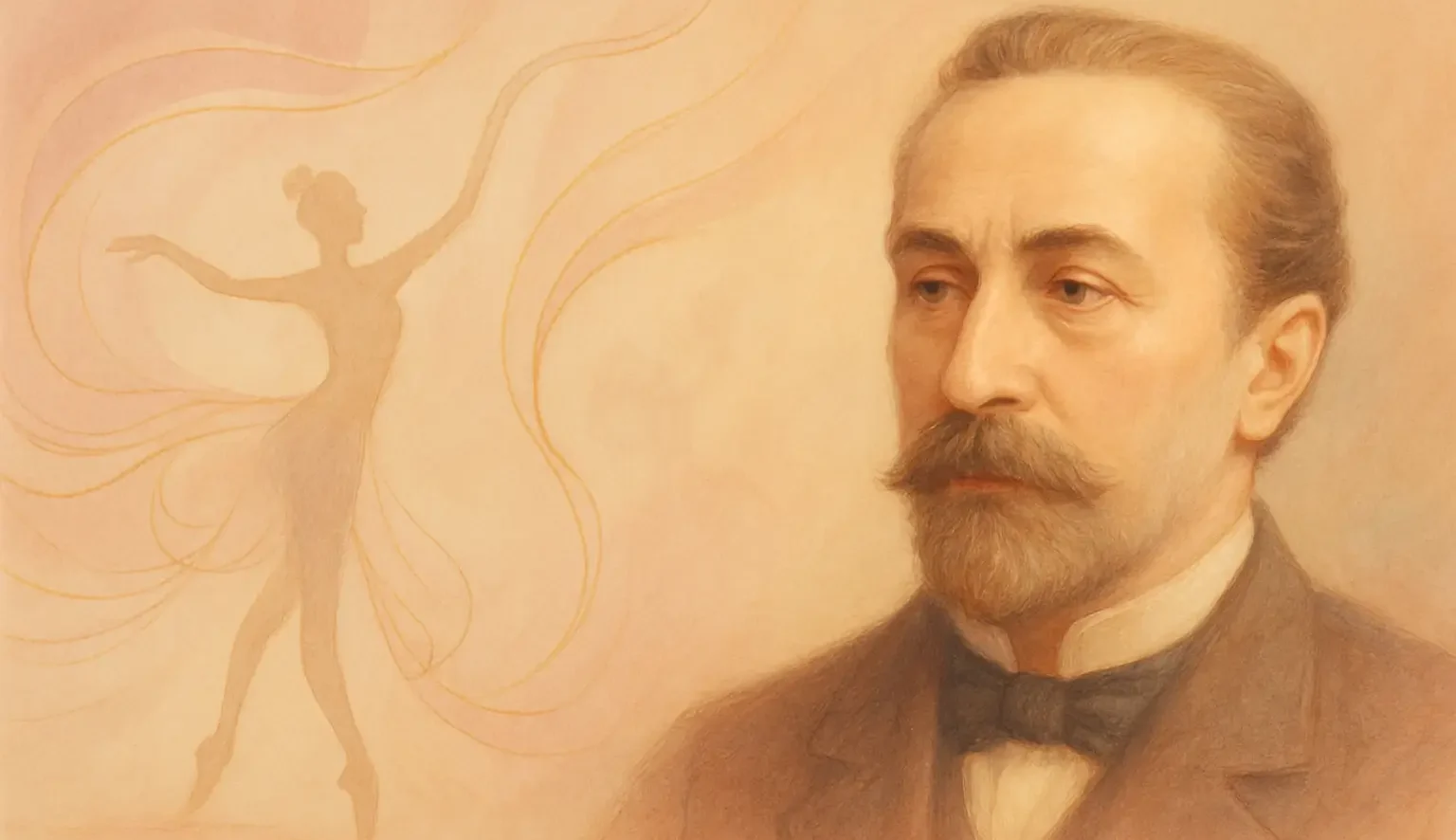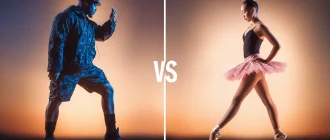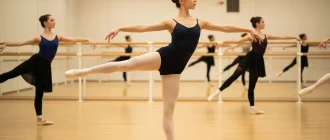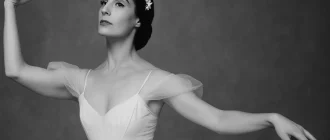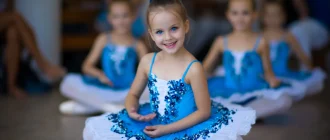Marius Petipa was a pioneering ballet dancer and choreographer born in 1818 in Marseille, France. Best known for his transformative work with the Russian Imperial Ballet, Petipa staged legendary ballets such as Sleeping Beauty and Swan Lake. His innovative choreography helped define classical ballet as we know it today.
Key Takeaways
- Born into an artistic family, Marius Petipa began his formal ballet training at a young age, laying the foundation for his future success as a dancer and choreographer.
- Petipa’s contributions were pivotal in transforming the Imperial Ballet into a leading institution, creating a distinctive Russian ballet style that integrated classical traditions with local influences.
- His collaborations with composers like Tchaikovsky and Minkus resulted in iconic ballets such as ‘The Sleeping Beauty’ and ‘Don Quixote,’ which remain central to the ballet repertoire today. Petipa’s choreography masterfully incorporated classical dances, balancing dramatic encounters with elaborate mass scenes to showcase technical and aesthetic beauty.
Audio Podcast
Early Life and Background
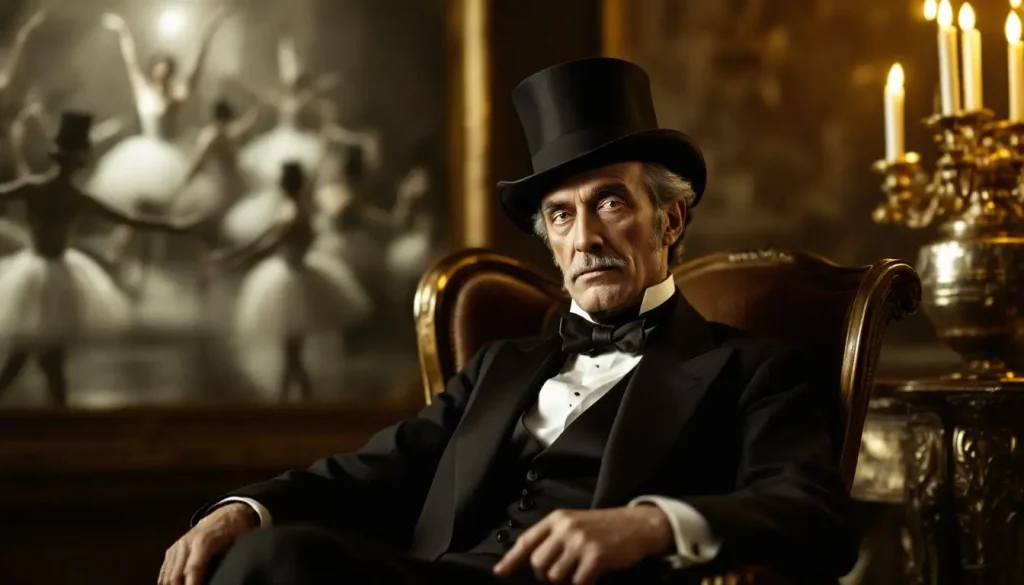
Marius Petipa was born on March 11, 1818, in Marseille, France, into a family steeped in the performing arts. His father, Jean Petipa, was a prominent ballet master, while his mother was an actress, ensuring that the world of theater surrounded the young dancer Marius, and he danced from an early age.
At seven, his parents encouraged Petipa to begin formal ballet training under his father’s guidance. This early exposure sowed the seeds for what would become a legendary career in ballet.
The family’s artistic environment provided Marius with a comprehensive education in the performing arts, enabling him to develop a deep understanding and appreciation for dance. Initially resistant, Petipa eventually found his passion for ballet, fueled by his parents’ encouragement and his innate talent. While in Bordeaux, he staged several works, including ‘le langage des fleurs’.
Petipa Family Relocated
The Petipa family’s relocation from Marseille to Brussels in April 1819 marked a significant turning point in Marius’s life. Jean Petipa accepted a position as Ballet Master at the Théâtre de la Monnaie, a move that would broaden Marius’s exposure to ballet. This new environment allowed him to witness the nuances of professional ballet performances and absorb the rich cultural influences of Brussels.
Marius lived in Brussels, immersed in a vibrant artistic community, and received a formal music education at the Music Conservatoire. This combination of academic and artistic training provided a solid foundation for his future pursuits in ballet, including the pas de deux.
Brussels played a key role in shaping Petipa’s artistic sensibilities and fostering his dedication to ballet.
Petipa Began Dancing
While residing in Brussels, Marius Petipa received a well-rounded education that included general academics and specialized music training at the Music Conservatoire. His early exposure to the performing arts continued to deepen, and at the age of five, he made his stage debut in one of his father’s ballet productions, marking the beginning of his lifelong journey in dance.
Marius began his formal ballet training under his father, Jean Petipa, the chief ballet master and choreographer. Although initially resistant, his father’s influence and the artistic environment ignited his passion for ballet. This rigorous training and early-stage experience laid the groundwork for his future success, shaping him into the dancer and choreographer who would later revolutionize the ballet world.
Rise to Prominence
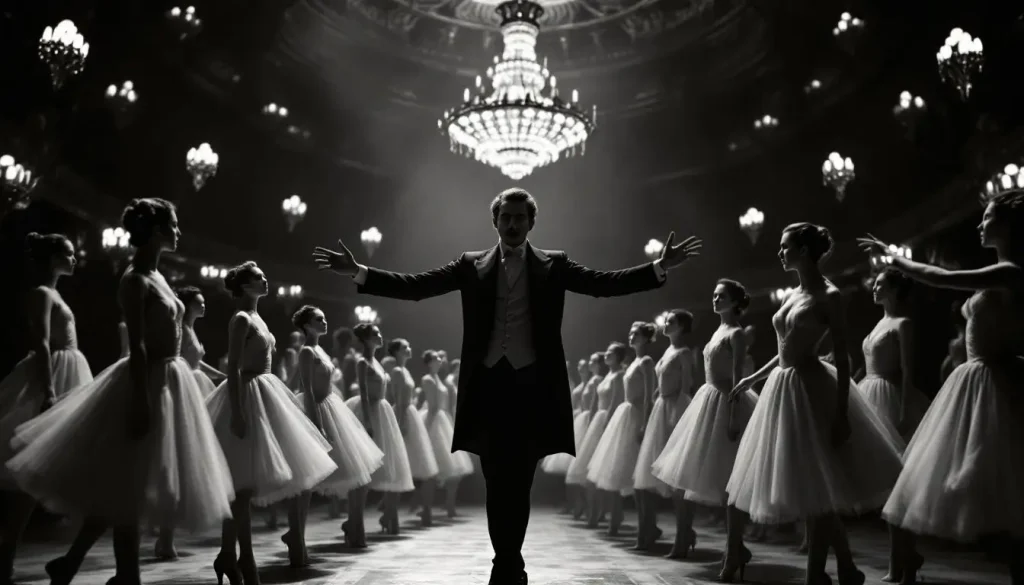
Marius Petipa’s ascent in ballet was marked by his performances at some of Europe’s most renowned venues, such as the Paris Opéra, where he established his reputation as a leading figure in the art form. His technical skill and artistic expression were evident in his performances, earning him significant acclaim and opening doors to new opportunities across various European theatres.
His dedication and innovative approach revived the Imperial Ballet’s reputation, transforming it into a leading European ballet company. Petipa’s work significantly enriched the Imperial Ballet’s repertoire, establishing it as a major institution on the global stage. His productions also led to the resurgence and acclaim of a lovely ballet company, capturing the admiration of critics and audiences alike.
Through his contributions, Petipa played a pivotal role in shaping the development of Russian ballet and elevating its status worldwide.
Paris Opéra and Théâtre de la Monnaie
Petipa’s performances at the Paris Opéra were crucial in establishing his reputation. Although his initial performances received mixed reviews, he gradually became known for his impressive mime skills and character portrayals, which helped him stand out in the competitive Parisian market.
His time at the Théâtre de la Monnaie in Brussels further contributed to his growing popularity, allowing him to develop his style and gain recognition.
Performing at the Théâtre de la Monnaie refined PePetipa’s skills and artistry, pivotal to his rise as a celebrated dancer. These experiences honed his abilities and prepared him for the significant roles and responsibilities he would later take on in his career.
Petipa’s Breakthrough
Petipa’s breakthrough came with his performances in notable ballets during the mid-19th century, establishing him as a principal dancer. His role in G’selle was a pivotal career point, leading to greater visibility and opportunities. These roles showcased his talent and charm, securing his position as a principal dancer and a leading ballet figure.
Performances in ballets such as ‘La Fille de Marbre’ were crucial in establishing Petipa’s stature as a principal dancer, highlighting his exceptional partnering abilities and technical prowess. These roles solidified his reputation and paved the way for his future successes as a choreographer and ballet master.
Contributions to Russian Ballet
Marius Petipa’s contributions to Russian ballet are monumental. As premier maître de ballet, he developed a distinctive Russian style that combined classical traditions with local influences. His innovative choreography and artistic vision significantly transformed the Russian ballet scene, establishing a distinct style and elevating its global reputation.
Petipa’s work at the Imperial Bolshoi Theatre and the Imperial Ballet School enhanced the quality of performances and laid the groundwork for the evolution of ballet. His collaborations and choreographic innovations have left a lasting imprint on the art form, influencing numerous choreographers and dancers in the 20th century and beyond.
Imperial Ballet School
At the Imperial Ballet School, Marius Petipa played a pivotal role in shaping the future of ballet training in Russia. His innovative choreography techniques became a cornerstone of the training curriculum, emphasizing a blend of classical technique and theatrical expression. These methods elevated the standard of ballet education and influenced generations of dancers.
Petipa played a key role in developing expressive ballet training by integrating mime with dance. His influence continues to echo in popular ballet training practices today, demonstrating the enduring impact of Petipa’s teaching methods on the art form.
Premier Maître de Ballet
Petipa’s influence was profound as premier maître de ballet at the Imperial Bolshoi Theatre. This prestigious position solidified his reputation as a leading figure in ballet, enabling him to shape the direction of Russian ballet. His innovative choreography and teaching methods left a profound legacy on the theatre, influencing generations of dancers and choreographers.
During his tenure, Petipa’s integration of classical ballet techniques elevated the quality of performances at the Imperial Bolshoi Theatre. His contributions were instrumental in establishing the theatre as a leading institution for ballet performance and choreography.
Iconic Ballets and Choreography
![]()
Petipa’s choreography blends athleticism and grace, creating visually stunning performances fundamental to classical ballet. Works like La Bayadère and Don Quixote are celebrated for their dramatic storytelling and intricate choreography.
These ballets showcase his artistic vision and highlight his ability to collaborate effectively with composers. Petipa’s creation and standardization of various pas de deux in these ballets further exemplify his influence on the art form.
Petipa’s collaborations with Tchaikovsky on Sleeping Beauty and Ludwig Minkus on Don Quixote and La Bayadère resulted in some of the most iconic ballets in history. These works continue to be central to the repertoires of major ballet companies worldwide, demonstrating the enduring legacy of Petipa’s Classical choreography.
Sleeping Beauty and Swan Lake
Premiered in 1890, ‘The Sleeping Beauty’ showcases Petipa’s skill in merging intricate narratives with classical dance techniques. Set to Tchaikovsky’s masterful score, this romantic ballet is celebrated for its elaborate choreography and emphasis on the corps de ballet. Petipa’s work on ‘The Sleeping Beauty’ became a benchmark for classical ballet, influencing countless productions worldwide.
Another iconic ballet, Swan Lake, features Petipa’s collaboration with Lev Ivanov, particularly in the contrasting styles of the two leading female roles. The enduring popularity of these ballets highlights Petipa’s lasting impact on the art form.
La Bayadère and Don Quixote
Both ‘La Bayadère’ and ‘Don Quixote’ are celebrated for their vibrant storytelling and rich character development, hallmarks of Petipa’s choreographic style. With its exotic themes and grand choreography, ‘La Bayadère’ features the famous Kingdom of the Shades scene, showcasing Petipa’s hallmark use of ensemble choreography.
‘Don Quixote,’ recognized for its lively choreography and vibrant music by Ludwig Minkus, reflects Petipa’s innovative approach to integrating the Spanish dance style into the final ballet. These works solidified Petipa’s place in the ballet repertoire and demonstrated his ability to create captivating dance narratives.
Petipa’s Original Ballets
Petipa’s original ballets, such as ‘La Fille du Pharaon,’ demonstrate his imaginative storytelling and ability to captivate audiences with exotic themes and classical dances. Inspired by the fascination with ancient Egypt, this ballet showcases Petipa’s skill in creating narratives that capture the audience’s imagination. The elaborate choreography and dramatic elements of ‘La Fille du Pharaon’ highlight Petipa’s versatility and innovative approach to ballet.
Another significant work, La Fleur de Grenade, reflects Petipa’s interest in Spanish themes and cultural elements. This ballet exhibits Petipa’s ability to fuse narrative with intricate choreography, showcasing traditional Spanish influences on romantic ballet and marking his versatility as a choreographer.
These original works enriched the ballet repertoire and highlighted Petipa’s creative genius.
| Aspect | Details | Why It Matters |
|---|---|---|
| Who Was He? | Marius Petipa (1818–1910) was a French-born ballet dancer, choreographer, and ballet master of the Imperial Russian Ballet. | Known as the “father of classical ballet,” he shaped the art form as we know it. |
| Major Works | The Sleeping Beauty, Swan Lake (revival), The Nutcracker (co-concept), Don Quixote, La Bayadère | These ballets are cornerstones of the classical repertoire, performed worldwide today. |
| Legacy & Influence | Developed the structure of classical ballet, including pas de deux and corps de ballet symmetry | His innovations became the foundation of 19th-century and modern ballet technique. |
Collaborations and Partnerships
Throughout his career, Petipa collaborated closely with various composers and choreographers, significantly shaping classical ballet’s physical and choreographic landscape. These collaborations enhanced his ballet’s emotional and narrative depth, creating a harmonious blend of dance and music.
The synergy between Petipa’s choreography and the musical scores of composers like Tchaikovsky and Minkus produced some of ballet’s most enduring works.
Tailoring his choreography to complement the musical elements of composers demonstrated Petipa’s artistic vision and collaborative spirit. This collaboration not only enriched the performances but also set new standards for the integration of music and dance in ballet.
Petipa Collaborated
In ‘Swan Lake,’ Petipa’s collaboration with Lev Ivanov added depth to the choreography, particularly in the contrasting styles of the two leading female roles. This partnership exemplified Petipa’s ability to work effectively with other choreographers, enhancing the overall artistic quality of the production. Collaborations were crucial in refining his style and expanding his creative horizons.
Marius Petipa’s collaborations with influential composers and choreographers significantly shaped the development of classical ballet. These partnerships allowed him to experiment with new ideas and techniques, resulting in ballets that pushed the art form’s boundaries and captivated audiences worldwide.
Petipa’s Work with Ballet Composers
Petipa’s choreography was often tailored to enhance the specific musical elements created by composers like Minkus, resulting in a harmonious blend of dance and music. This approach enriched the ballets and created a cohesive artistic expression that resonated with audiences.
The emotional depth and narrative clarity achieved through these collaborations were instrumental in establishing Petipa’s works as timeless classics.
Petipa’s choreography often mirrored the musical themes of the composers, seamlessly integrating music and movement to enhance the storytelling experience. This synergy between choreography and music is one of the defining features of Petipa’s ballets, contributing to their enduring popularity and influence.
Legacy and Influence
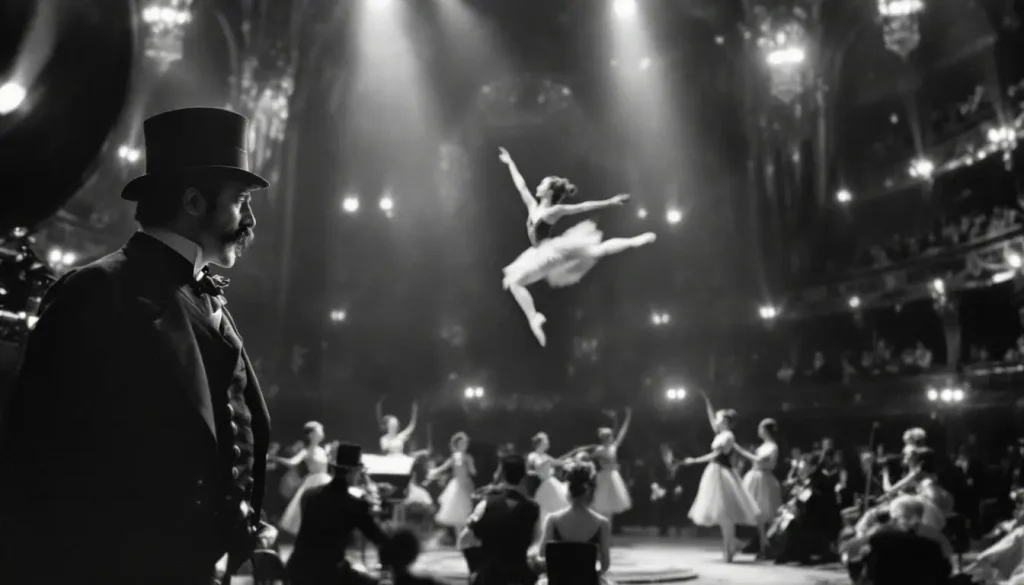
Marius Petipa’s influence on the world of ballet is profound and far-reaching. His innovative choreography and artistic vision significantly influenced the development of Russian ballet, revitalizing its popularity and establishing a new classical ballet repertoire that became foundational for future generations.
Petipa’s integration of Russian folklore into ballet contributed significantly to the rise of nationalism in dance during the 19th century, further cementing his influence on the art form.
Even after his retirement in 1905, Petipa’s artistic legacy continued to shape the evolution of ballet. His works remain essential to the repertoires of major ballet companies worldwide, demonstrating the enduring impact of his contributions. Petipa’s influence on modern ballet techniques and performance standards is a testament to his lasting legacy.
Petipa’s Final Years
In his final years, Petipa continued to play a crucial role in shaping the curriculum and training methods at the Imperial Ballet School. His innovative teaching methods emphasized technical precision and expressive performance, elevating the standard of ballet education in Russia.
These rigorous training techniques improved the quality of ballet performances and ensured that future generations of dancers would carry on his legacy.
Petipa’s contribution to ballet education was substantial, and his methods continue to influence ballet training practices today. Emphasizing the blend of classical technique with theatrical expression, he created a training program that had a lasting impact on the entire ballet world.
Petipa Remained a Key Figure
Today, Petipa’s ballets remain essential to the repertoires of major ballet companies worldwide. The enduring popularity of his works, such as ‘The Sleeping Beauty’ and ‘Swan Lake,’ is a testament to his lasting influence on the art form. The synergy between Petipa’s choreography and Minkus’s music created enduring ballet scores that continue to captivate audiences.
Petipa’s influence extends beyond his choreography; his teaching methods and vision have shaped ballet training practices for generations. His legacy is evident in the continued performance and study of his ballets, which remain a vital part of the classical ballet repertoire.
Resume
Marius Petipa’s contributions to the world of ballet are immeasurable. His journey, from his early days in Marseille to his rise as a leading figure in Russian ballet, is a testament to his dedication, talent, and innovative spirit. His iconic ballets, such as The Sleeping Beauty, Swan Lake, La Bayadère, and Don Quixote, continue to enchant audiences worldwide, showcasing his mastery of choreography and storytelling.
Petipa’s legacy lives on through the countless dancers and choreographers inspired by his work. His influence on ballet training, performance standards, and artistic vision has left an indelible mark on the art form, ensuring that future generations will celebrate his contributions. The world of ballet owes a great debt to Marius Petipa, whose enduring legacy continues to shape the future of dance.

